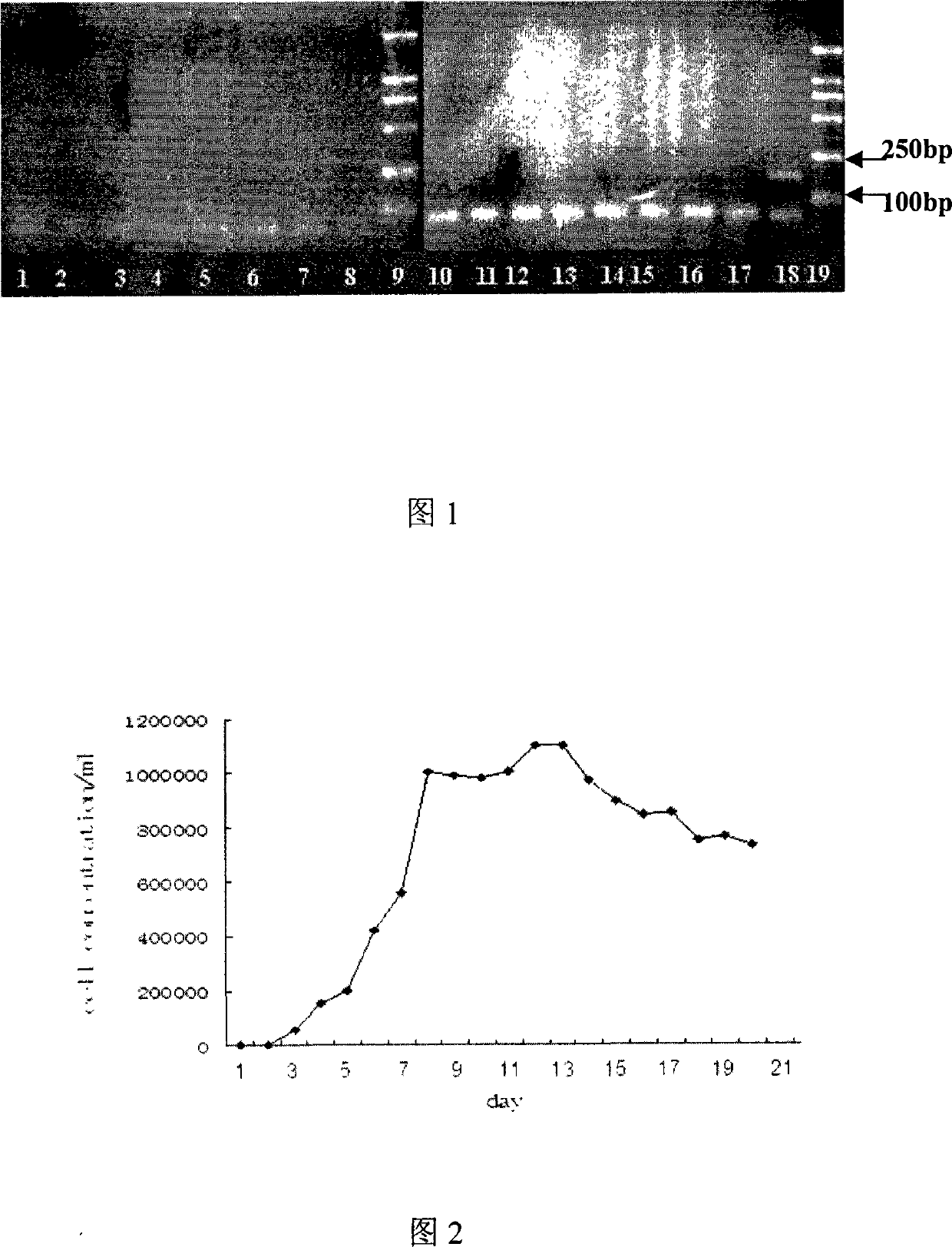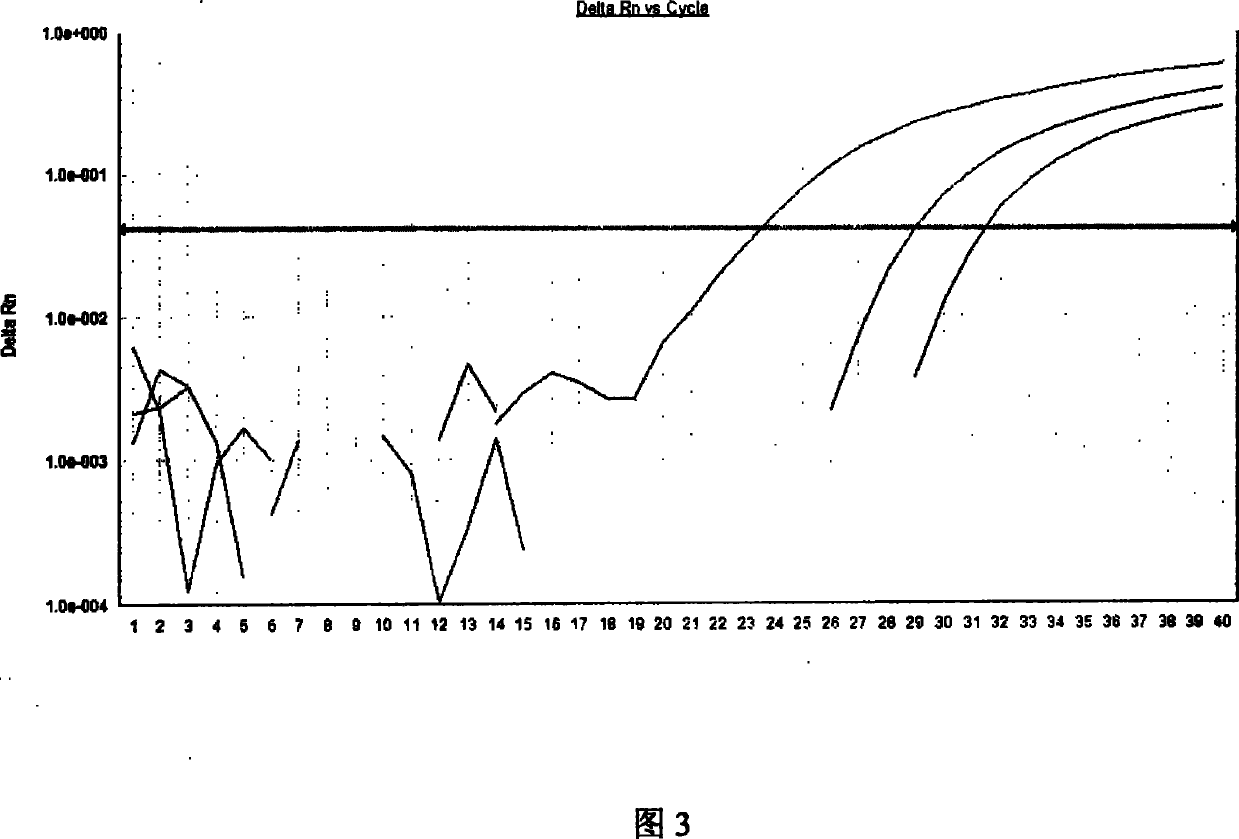Skeletonema costatum PCNA gene detecting method
A gene detection, SC-FQ-PCNA technology, applied in the detection field of planktonic diatoms, can solve the problem that the basic physiological and ecological parameters such as the on-site growth rate of planktonic algae cannot be measured, and achieve the effect of good stability
- Summary
- Abstract
- Description
- Claims
- Application Information
AI Technical Summary
Problems solved by technology
Method used
Image
Examples
Embodiment Construction
[0055] In the embodiment of the present invention, the culture process of Skeletonemacostatum is: Skeletonemacostatum (Skeletonemacostatum) is cultivated to logarithmic growth phase with F / 2 medium in the laboratory, culture conditions: light / dark cycle is 12h / 12h , the light intensity is 4000Lux, and the culture temperature is 22-25°C.
[0056] Collect 5 parts of Skeletalum costanum (cell density is 4.1×107 cells / mL) cultured for one week about 3.8×10 7 cells (the weight of the algae concentrate is about 150mg). Use the following RNA extraction methods to extract:
[0057] (1) Collect algae cells and grind them into fine powder with a mortar under the condition of continuously adding liquid nitrogen;
[0058] (2) Add the grinding liquid to 1mL TRIZOL reagent, and homogenize at room temperature for 5min;
[0059] (3) Add 200 μL of chloroform, shake vigorously for 15 seconds, and incubate at room temperature for 3 minutes;
[0060] (4) Centrifuge at 12000rpm for 15min at 4°...
PUM
| Property | Measurement | Unit |
|---|---|---|
| diameter | aaaaa | aaaaa |
| molecular weight | aaaaa | aaaaa |
Abstract
Description
Claims
Application Information
 Login to View More
Login to View More - R&D
- Intellectual Property
- Life Sciences
- Materials
- Tech Scout
- Unparalleled Data Quality
- Higher Quality Content
- 60% Fewer Hallucinations
Browse by: Latest US Patents, China's latest patents, Technical Efficacy Thesaurus, Application Domain, Technology Topic, Popular Technical Reports.
© 2025 PatSnap. All rights reserved.Legal|Privacy policy|Modern Slavery Act Transparency Statement|Sitemap|About US| Contact US: help@patsnap.com



